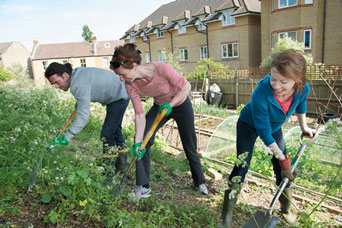Understanding participation

The Understanding Society project illustrates how social science description, in this case measuring participation, depends on social science understanding – on how participation is defined. The project identifies two broad dimensions:
- activities primarily defined as forms of taking part in, or what the project calls ‘social participation’, including involvement or interest in politics, involvement in local civic activities or volunteering
- activities related to making use of, based on consumption including material consumption and consumption of social and environmental resources.
These different dimensions of participation relate to the ability of people to participate in social worlds, but in different ways. Recalling Levitas’s comments about participation, you might notice that these two dimensions also involve people making a difference to social worlds by joining in shared social activities; these are ways in which people enact their social worlds in new ways.
People can engage in varied forms of informal civic activity and associational life (the project calls this 'neighbouring'), and in formal political processes such as voting or membership of a political party. A person’s material consumption will depend on them having the economic resources to pay for goods and services that are necessary in everyday life, whereas social consumption also depends on the different resources through which people sustain ordinary relationships.
The idea of defining and measuring participation as a ‘multidimensional concept’, combining both social participation and consumption, follows the work of Peter Townsend (1979) and other social scientists whom you saw in the film, ‘Social science, poverty and participation’. They argued that being able to afford a certain level of consumption is a basic condition of being able to participate fully as a member of society.
Watch the following film clip, ‘Poverty and social exclusion’, in which social scientist David Gordon, an expert in poverty research, discusses the concept of social exclusion. Try to focus on how much emphasis he places on consumption-based criteria in describing and evaluating the quality of people’s participation.
Transcript: Poverty and social exclusion
Gordon defines participation even more broadly than Levitas. Social exclusion is an important issue for him because it prevents people ‘doing the things they want to do’.
In his definition of social exclusion, Gordon is getting at the idea that what’s at stake in defining poverty is not only that some people have fewer material resources than others, but also that this affects their ability to take part in activities in which they should be able to participate.
